Introduction
Autism Spectrum Disorder (ASD) is a multifaceted neurodevelopmental condition deeply rooted in genetic factors. Recent studies have identified numerous genes associated with ASD, underscoring their significant role in brain development and neural connectivity. These genetic variations can impact cognitive abilities and development, offering essential insights into the diverse manifestations of autism.
Twin studies further illustrate the strong genetic influence, while also highlighting the interplay between genetics and environmental factors. Heritability estimates of ASD range from 60% to 90%, emphasizing the importance of genetic research in developing targeted interventions. Researchers have also distinguished between common and rare genetic variants, both contributing to autism risk in different magnitudes.
Additionally, epigenetic mechanisms, such as DNA methylation, reveal how environmental factors can modify gene expression, affecting autism outcomes. As science progresses, integrating genomic and epigenomic information promises to revolutionize early diagnosis and personalized support for individuals with autism, paving the way for improved clinical outcomes and enhanced family support.
The Genetic Basis of Autism
Autism Spectrum Disorder (ASD) is a complex neurodevelopmental condition with a notable hereditary aspect. Research has identified numerous hereditary factors linked to ASD, highlighting the critical role of genetics in its development. These hereditary factors can influence brain development and neural connectivity, resulting in the diverse manifestations of autism. For example, a study conducted by Andrew Sharp, PhD, from Icahn Mount Sinai discovered that excessive tandem repeats in certain genes can interfere with hereditary instructions, affecting cognitive abilities and development. This contributes to the comprehension that hereditary variations can have broad implications, affecting everything from educational attainment to the likelihood of intellectual disabilities. Furthermore, pioneering studies have charted molecular processes in people with ASD, presenting new pathways for therapeutic approaches. Comprehending these genetic complexities is vital for early intervention and tailored assistance for individuals with developmental disorders.
Twin Studies: Evidence for Genetic Etiology
Twin studies have played a pivotal role in shedding light on the hereditary nature of this condition. By comparing identical and fraternal twins, researchers have consistently found a higher concordance rate for spectrum disorder among identical twins. This significant finding underscores a strong genetic influence in the development of the condition. While genetics play a crucial role, these studies also emphasize the importance of environmental factors. As noted by the National Institutes of Health, the intricate interplay between genetics and the environment remains a key area of research. Comprehending these elements can assist in timely assistance and support for individuals and families impacted by developmental disorders.
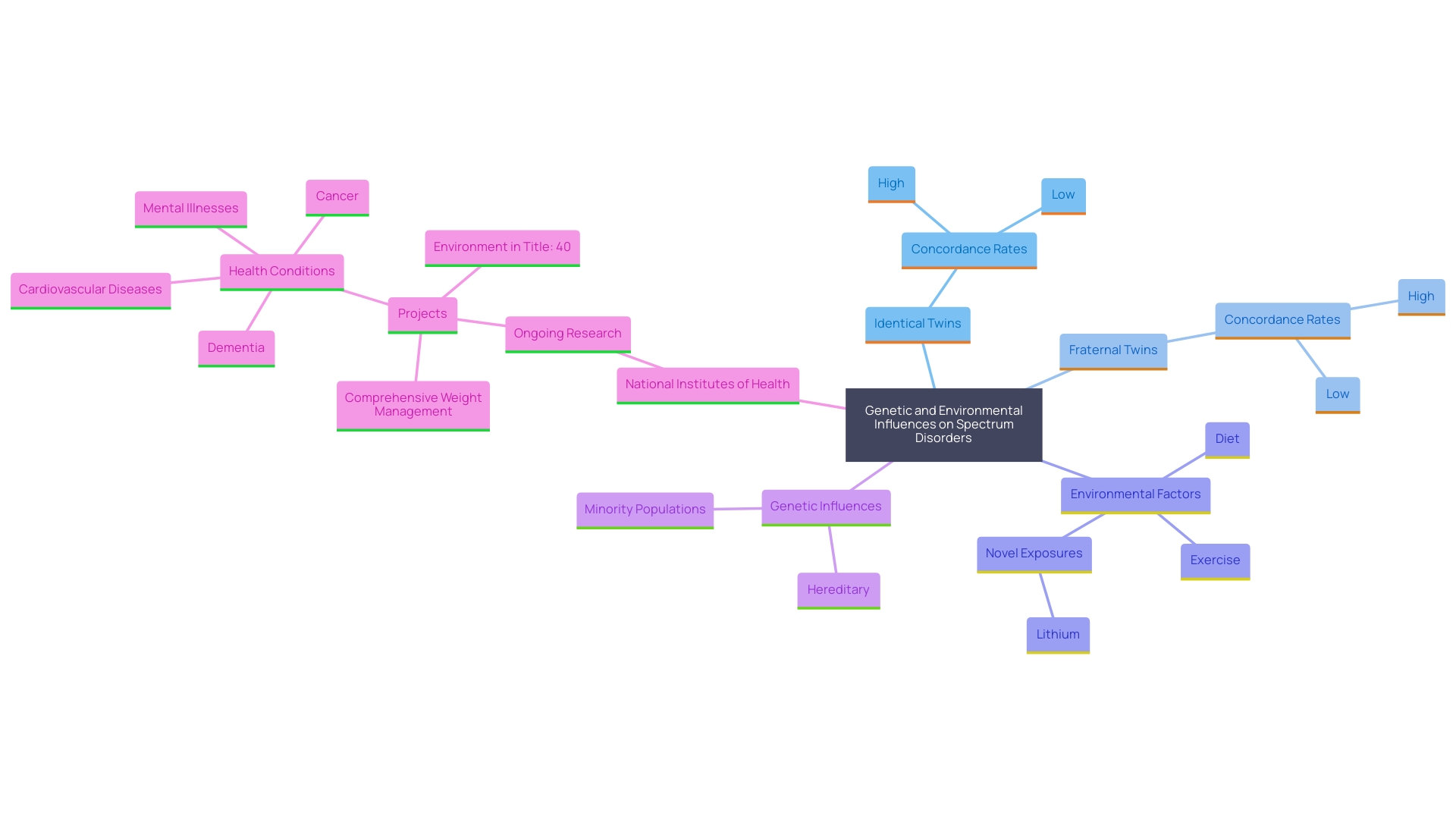
Heritability Estimates: Understanding the Genetic Contribution
Research indicates that the heritability of autism spectrum disorder (ASD) is estimated to range between 60% to 90%, emphasizing the considerable role genetics play in the development of the disorder. This understanding is crucial as it underscores the importance of hereditary research in identifying potential interventions and support mechanisms. Dr. Daniel Geschwind's work at UCLA, for example, is crucial in charting regulation of hereditary factors across various brain areas and developmental phases, seeking to connect the divide between hereditary risk and the molecular processes of the condition. As Geschwind's studies have shown, DNA profiling can help identify susceptibility genes and define the molecular changes in autistic brains, which is essential for advancing our knowledge and developing targeted therapies.
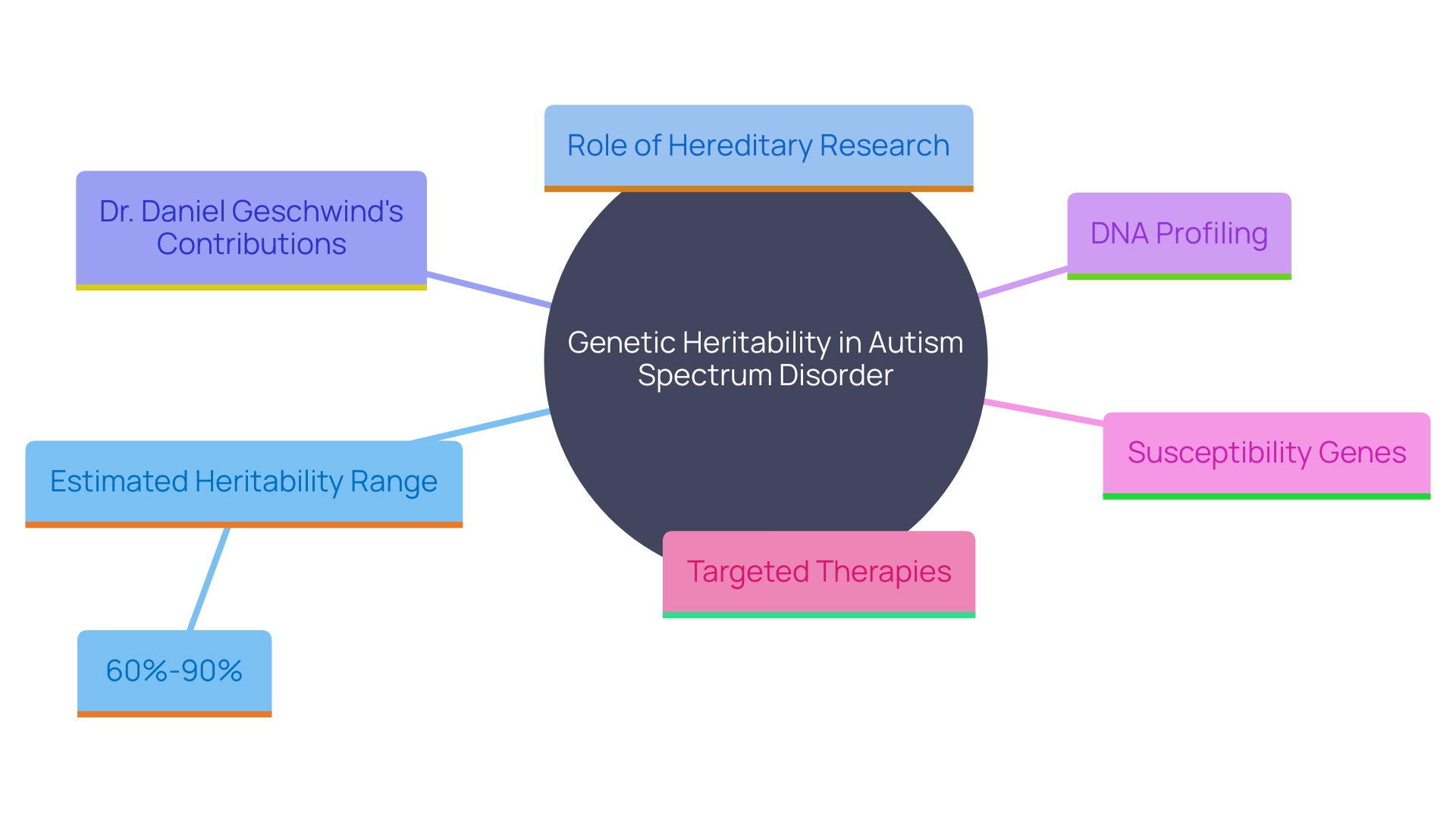
Common and Rare Genetic Variants in ASD
Researchers have pinpointed both common and rare genetic variants associated with the disorder. Common variants, which are prevalent in the general population, may slightly elevate the risk of developmental disorders. On the other hand, rare variants, although less frequently observed, often have a more substantial impact on development and are typically associated with severe forms of the condition. A report from the NIMH highlights that rare variations have stronger statistical support for their association with mental health conditions, including autism, compared to common variations. This understanding is crucial for identifying individuals at risk and providing tailored support. Moreover, the Danish Data Protection Agency has approved studies emphasizing the importance of ethical guidelines and consent protocols in genetic research, ensuring that patient information remains confidential and secure.
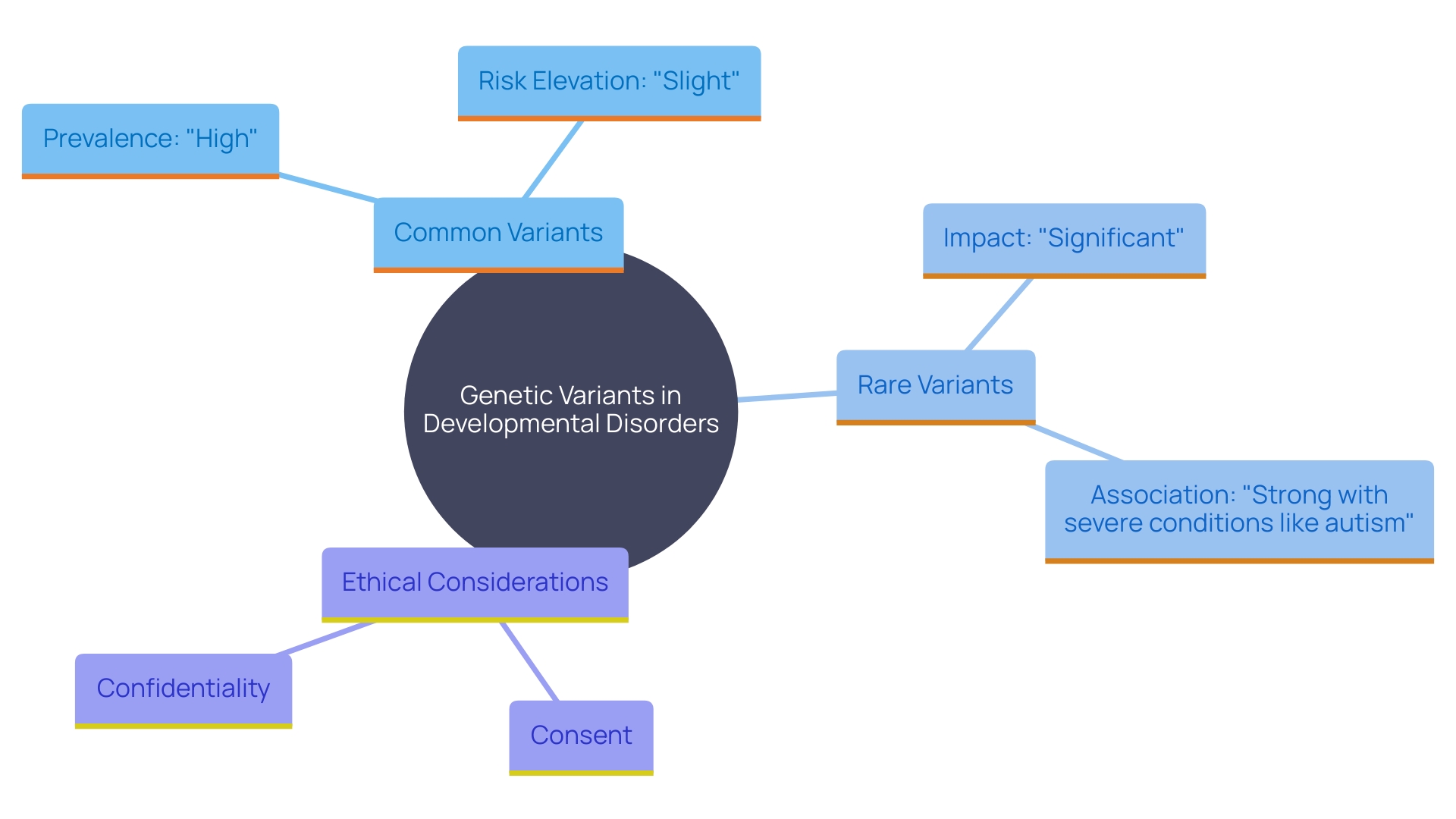
Epigenetic Influences: DNA Methylation and ASD Risk
Epigenetics delves into how environmental factors can modify gene expression without altering the DNA sequence itself. This field offers profound insights, especially concerning autism. One mechanism, DNA methylation, has been identified as a key process where environmental exposures impact genetic risk. Methylation involves the addition of chemical tags, known as methyl groups, to specific DNA locations, which can activate or deactivate certain traits, thereby regulating protein production. This complex interplay between genes and the environment underscores the intricate hereditary patterns of this condition.
A case study in the Journal of Personalized Medicine illustrates this complexity. It involved four-year-old dizygotic twins with significant developmental challenges, diagnosed at twenty months. Regardless of their hereditary variations, the research noted considerable enhancements through tailored, non-pharmaceutical methods by a diverse group of specialists. The success of these interventions emphasizes how environmental and lifestyle changes can affect hereditary expression and developmental outcomes.
Beth Lambert, founder of Epidemic Answers, emphasizes the hopeful perspective of epigenetics research. She notes the potential for reversing many conditions through lifestyle changes and environmental adjustments, providing crucial resources and support for parents. This comprehensive understanding of the condition's causes is essential, as it recognizes that both hereditary tendencies and environmental influences play significant roles in the development of the disorder.
The California Institute for Regenerative Medicine (CIRM) has advanced this research by financing initiatives to discover the biological processes behind neuropsychiatric disorders such as developmental disorders. These efforts aim to identify novel targets and biomarkers, paving the way for improved diagnosis and treatment.
Epigenetics changes an organism by altering gene expression rather than the genetic code itself. These modifications, influenced by various stimuli such as chemicals, trauma, or exercise, can be passed from one generation to the next. Grasping these processes provides a thorough perspective on the hereditary elements of this condition and the significance of early intervention and assistance.
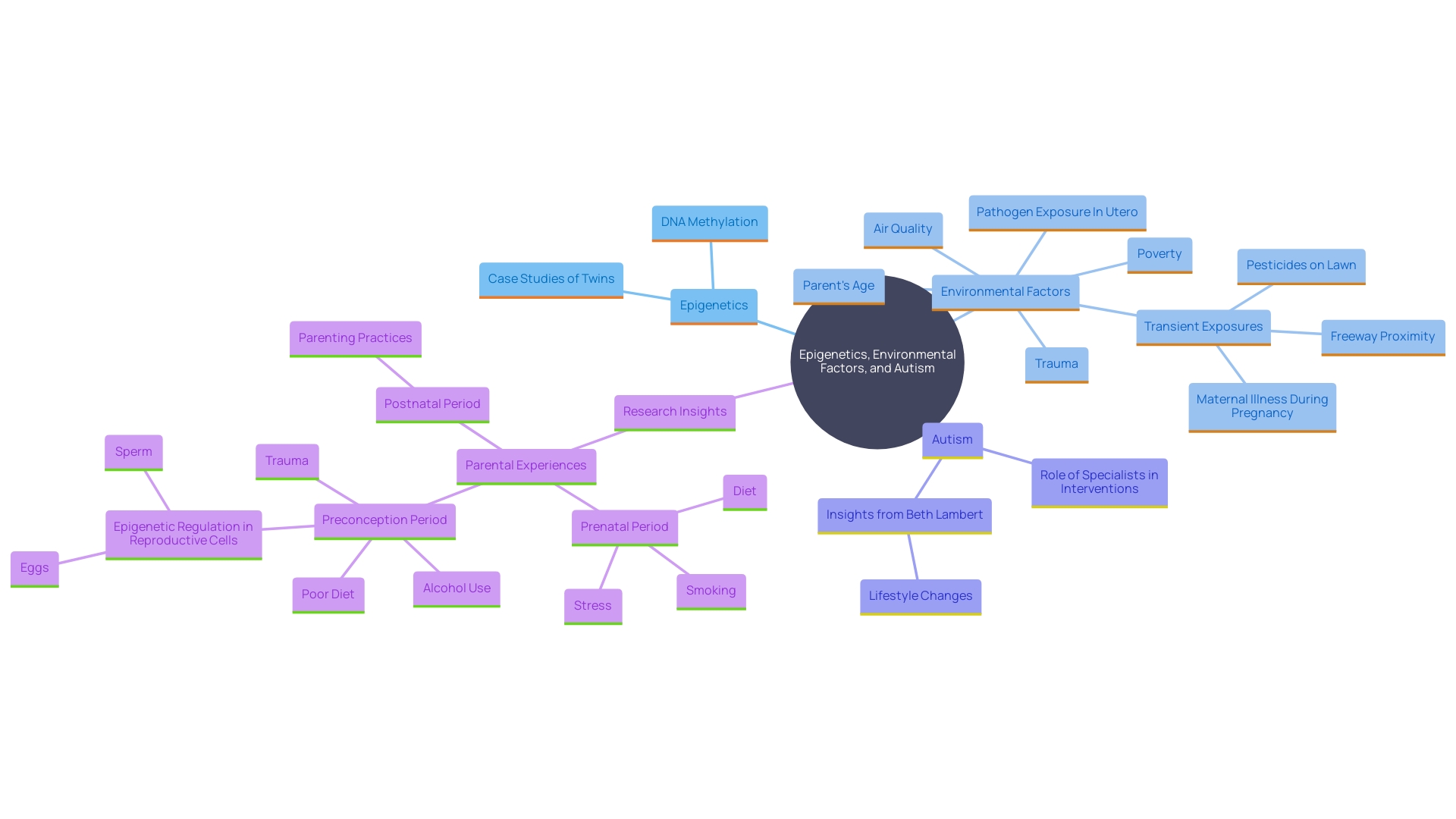
Future Directions: Integrating Genomic and Epigenomic Information
As the science of genetics and epigenetics in ASD progresses, future research aims to merge these insights to create a clearer understanding of the hereditary nature of this condition. This comprehensive integration is expected to lead to more precise diagnostic tools, enabling early and accurate identification of the condition. Organizations like NeuroQure are at the forefront, working on innovative diagnostic technologies that could identify ASD within weeks of birth, rather than the years it currently takes. Such breakthroughs could revolutionize personalized interventions and significantly enhance the support available for families navigating developmental disorders. As Dr. John Jay Gargus emphasizes, leveraging broad phenotypic data and genetic analysis is crucial for characterizing the diverse forms of autism and their associated traits, ultimately improving clinical outcomes.
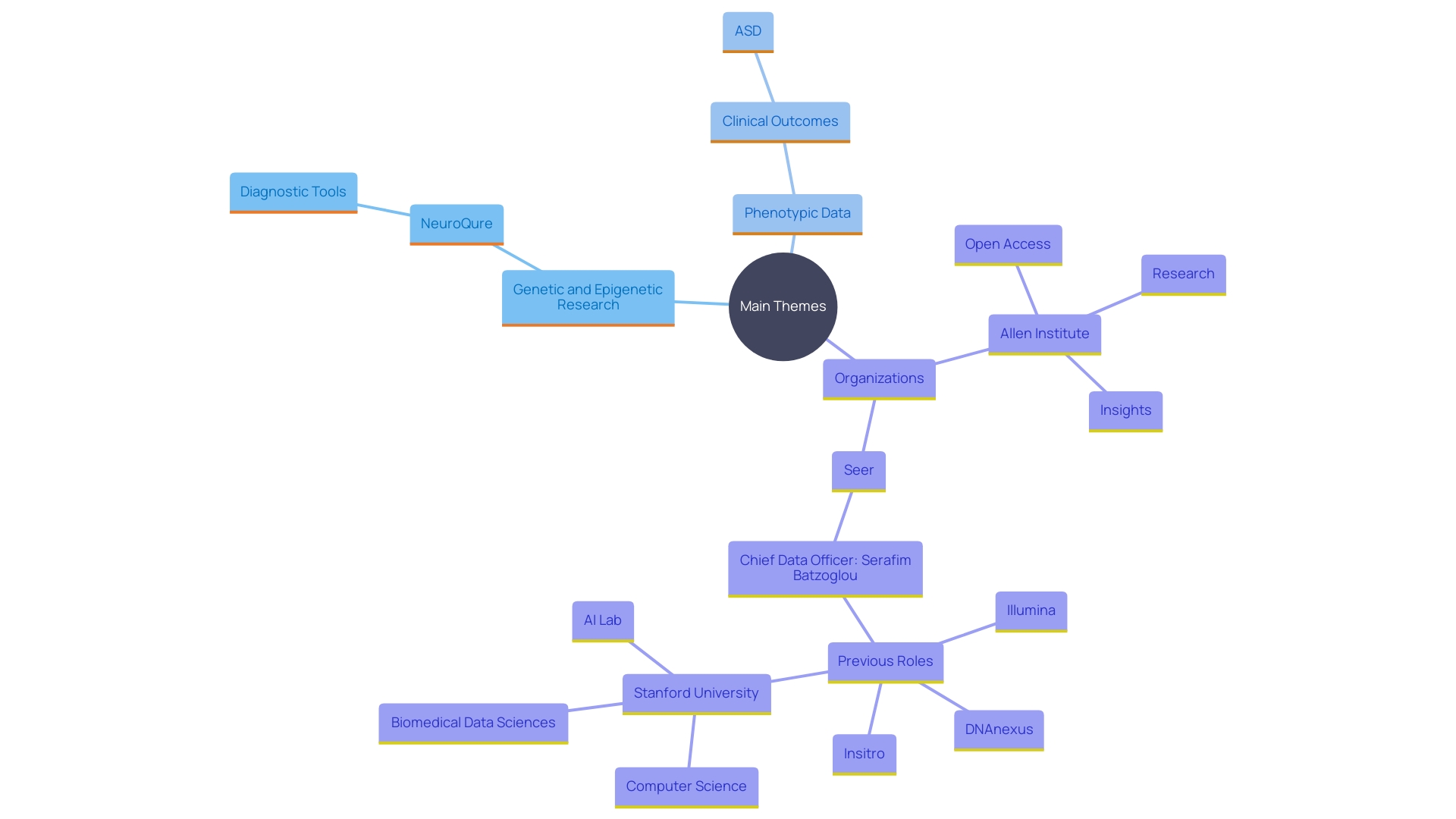
Conclusion
The exploration of Autism Spectrum Disorder (ASD) highlights the crucial role of genetics in its development. Research has identified numerous genes that impact brain development and neural connectivity, making it essential for early intervention and personalized support.
Twin studies reveal a higher concordance rate for autism among identical twins, emphasizing the strong genetic influence while also recognizing environmental factors. With heritability estimates ranging from 60% to 90%, understanding these genetic contributions is vital for effective intervention strategies.
The distinction between common and rare genetic variants further enhances this understanding. While common variants may slightly increase risk, rare variants often have a more pronounced effect, particularly in severe cases. This insight is critical for tailoring support to those at greatest risk.
Additionally, epigenetics sheds light on how environmental influences can modify gene expression. Research suggests that lifestyle changes can positively impact autism outcomes, underscoring the importance of a holistic care approach.
In summary, ongoing research into the genetic and epigenetic aspects of ASD is essential for improving support for affected individuals and families. By staying informed and advocating for targeted interventions, parents can effectively navigate the complexities of autism, ensuring their children receive optimal care and opportunities for growth.




